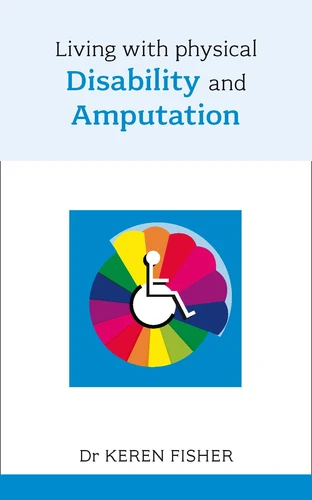Living with Physical Disability and Amputation
Par :Formats :
Disponible dans votre compte client Decitre ou Furet du Nord dès validation de votre commande. Le format ePub protégé est :
- Compatible avec une lecture sur My Vivlio (smartphone, tablette, ordinateur)
- Compatible avec une lecture sur liseuses Vivlio
- Pour les liseuses autres que Vivlio, vous devez utiliser le logiciel Adobe Digital Edition. Non compatible avec la lecture sur les liseuses Kindle, Remarkable et Sony
- Non compatible avec un achat hors France métropolitaine
 , qui est-ce ?
, qui est-ce ?Notre partenaire de plateforme de lecture numérique où vous retrouverez l'ensemble de vos ebooks gratuitement
Pour en savoir plus sur nos ebooks, consultez notre aide en ligne ici
- FormatePub
- ISBN978-1-84709-121-5
- EAN9781847091215
- Date de parution31/12/2010
- Protection num.Adobe DRM
- Infos supplémentairesepub
- ÉditeurSheldon Press
Résumé
According to the Department of Health, there are 8.7 million physically disabled people in the UK. Of these, some 460, 000 people have spinal cord injuries and/or amputations. Acquiring a disability brings specific problems, not just in terms of confidence, self-esteem, and adapting to a new physical reality, but of the recognized medical phenomenon of limb disconnection, which involves a mismatch between the brain's actual representation of the body shape and its physical appearance.
There is plenty of mythology around 'phantom limbs' and similar, but this book takes an evidence-based look at the reality, and uses cognitive behavioural therapy and other methods to deal with it.
There is plenty of mythology around 'phantom limbs' and similar, but this book takes an evidence-based look at the reality, and uses cognitive behavioural therapy and other methods to deal with it.
According to the Department of Health, there are 8.7 million physically disabled people in the UK. Of these, some 460, 000 people have spinal cord injuries and/or amputations. Acquiring a disability brings specific problems, not just in terms of confidence, self-esteem, and adapting to a new physical reality, but of the recognized medical phenomenon of limb disconnection, which involves a mismatch between the brain's actual representation of the body shape and its physical appearance.
There is plenty of mythology around 'phantom limbs' and similar, but this book takes an evidence-based look at the reality, and uses cognitive behavioural therapy and other methods to deal with it.
There is plenty of mythology around 'phantom limbs' and similar, but this book takes an evidence-based look at the reality, and uses cognitive behavioural therapy and other methods to deal with it.



